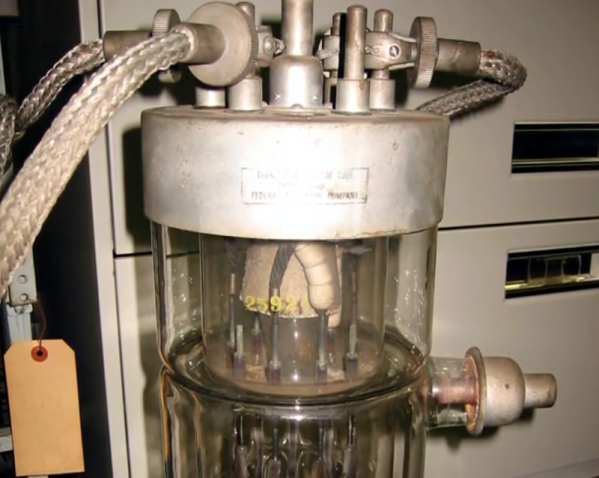Crosley was a famous name in radio for more than one reason. The National VOA Museum of Broadcasting has a video telling [Powel Crosley Jr.’s] story, and the story behind the 500 kW WLW transmitter. WLW was an AM broadcast station often called the nation’s channel since its signal covered most of the United States. The first Crosley station was identified at 8CR, running 20 watts from [Crosley’s] living room. Quite a modest start! By 1922, he had moved to his family business location along with 500 watts of output. Over the years, WLW got more powerful until it was finally a 500 kW giant.
wlw3 Articles
More Power: Powel Crosley And The Cincinnati Flamethrower
We tend to think that there was a time in America when invention was a solo game. The picture of the lone entrepreneur struggling against the odds to invent the next big thing is an enduring theme, if a bit inaccurate and romanticized. Certainly many great inventions came from independent inventors, but the truth is that corporate R&D has been responsible for most of the innovations from the late nineteenth century onward. But sometimes these outfits are not soulless corporate giants. Some are founded by one inventive soul who drives the business to greatness by the power of imagination and marketing. Thomas Edison’s Menlo Park “Invention Factory” comes to mind as an example, but there was another prolific inventor and relentless promoter who contributed vastly to the early consumer electronics industry in the USA: Powel Crosley, Jr.
Continue reading “More Power: Powel Crosley And The Cincinnati Flamethrower”
Retrotechtacular: A Tour Of WLW, A 500,000 Watt Radio Transmitter

This is an overview of a 500,000 Watt radio transmitter site. It’s one of the slides shared in a guided video tour of the transmitter’s hardware. The radio station — whose call sign was WLW — called itself the Nation’s Station because of its ability to reach so much of the country.
It operated at the 500 kW level starting back in the 1930’s. The technology at the time meant that there were a lot of challenges involved with transmitting at this level of power. It took 750 kW input to achieve the 500 kW output. To reach that the station had a set of AC motors in the basement generating the 4500 Amps at 33 Volts DC needed to power the transmitter to heat each filament. Obviously there was a lot of heat generated at the same time. The system was water-cooled. An elaborate network of Pyrex pipes carried distilled water to and from the tubes to handle the heat dissipation.
The video tour lasts about thirty minutes. It’s just packed with interesting tidbits from the experts leading the tour so add it to your watch list for some geeky entertainment over the weekend.
Continue reading “Retrotechtacular: A Tour Of WLW, A 500,000 Watt Radio Transmitter”












